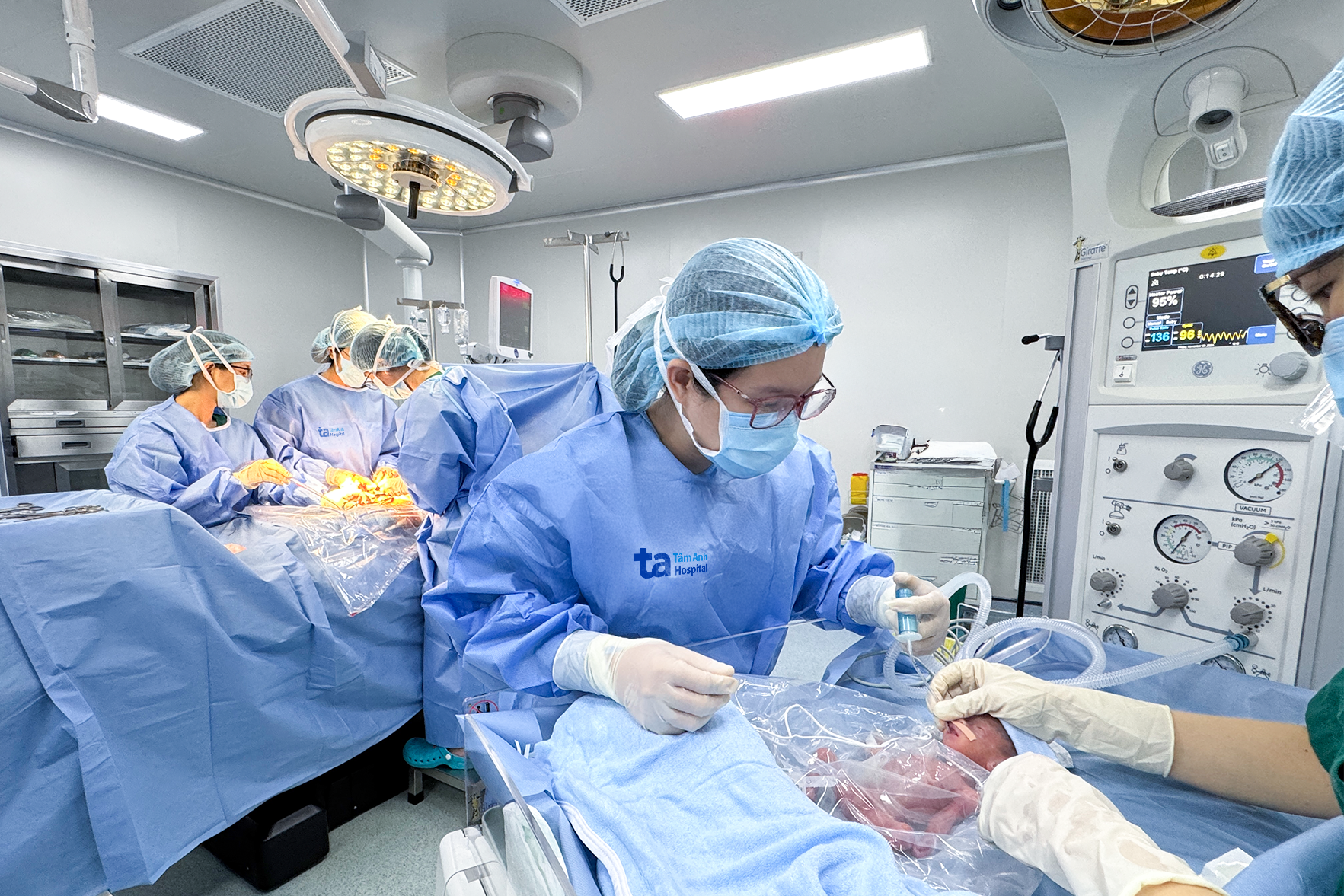Dr. Nguyen Thi Thanh Tam, from the Obstetrics and Gynecology Center at Tam Anh General Hospital in Ho Chi Minh City, stated that without prompt recognition and treatment, these complications can be fatal.
Amniotic Fluid Embolism
This occurs when amniotic fluid, fetal cells, hair, vernix, or other fetal debris enters the mother's bloodstream, usually through the venous system at the placental site, triggering an allergic-like reaction. This reaction can lead to acute cardiorespiratory failure, severe hemorrhage, pulmonary embolism, and cardiac arrest.
According to Dr. Tam, approximately 50% of women die within the first hour of experiencing amniotic fluid embolism symptoms. The surviving 50% often suffer severe neurological damage. Any pregnant woman can experience amniotic fluid embolism before, during, or after delivery. Risk factors include being over 35 years old, multiple pregnancies, previous births, placental abnormalities, preeclampsia, gestational hypertension, polyhydramnios, cesarean delivery, and placental abruption. Symptoms include shortness of breath, cyanosis, hypotension, and cardiac arrest.
Postpartum Hemorrhage
This involves blood loss exceeding 1,000 ml after a cesarean section or 500 ml after a vaginal delivery within the first 24 hours postpartum, causing a decrease in blood volume. Without prompt treatment, postpartum hemorrhage can lead to death from excessive blood loss, circulatory collapse, and lack of oxygen to the brain, heart, and lungs, ultimately resulting in cardiac arrest.
Postpartum hemorrhage is more common in women who have had multiple births, multiple pregnancies, large babies, or multiple abortions. Symptoms include fatigue, cyanosis, pale skin, thirst, rapid and weak pulse, hypotension accompanied by heavy bleeding from the uterus or tears in the cervix or vagina. In some cases, blood pools in the uterus or forms large clots requiring suction, curettage, or surgery to remove the clots and stop the bleeding. Severe cases may necessitate a hysterectomy to save the mother's life.
Eclampsia
Eclampsia usually follows preeclampsia, characterized by high blood pressure occurring after 20 weeks of pregnancy and after delivery. It often involves sudden and severe hypertension exceeding 160/110 mmHg. This high blood pressure puts significant strain on the heart and blood vessels, potentially leading to heart failure and cardiac arrest. Seizures can occur suddenly due to stroke, with a high mortality rate if diagnosis and treatment are delayed. Preeclampsia and eclampsia can cause complications such as fetal growth restriction, premature birth, and stillbirth. Women at higher risk include those with multiple pregnancies, advanced maternal age, a history of hypertension, diabetes, kidney disease, or obesity during pregnancy.
 |
The medical team performs an emergency C-section on a patient experiencing eclampsia at Tam Anh General Hospital. Photo: Tue Diem |
The medical team performs an emergency C-section on a patient experiencing eclampsia at Tam Anh General Hospital. Photo: Tue Diem
Uterine Rupture
This is a tear in the uterine wall, extending from the lining through the muscle layer. If it also tears the peritoneum, allowing the uterine cavity to communicate with the abdominal cavity, it's called a complete uterine rupture. Uterine rupture can occur during pregnancy but is more common during labor. Symptoms include sudden abdominal pain in the uterus, vaginal bleeding, and fetal distress, potentially leading to fetal death.
In some cases, the mother may experience shock, pale complexion, rapid and shallow breathing, anxiety, cold extremities, sweating, rapid pulse, low blood pressure, and sometimes cardiac arrest. Cardiac arrest results from acute blood loss, leading to shock. Uterine rupture also poses a risk to the mother and fetus, causing damage to nearby organs and infection, increasing the risk of severe complications.
According to Dr. Thanh Tam, sudden cardiac arrest during childbirth is a dangerous complication. To prevent it, pregnant women should have regular checkups to detect contributing factors such as preeclampsia, blood clotting disorders, cardiovascular issues, and placental abruption. Expectant mothers should choose hospitals with emergency resuscitation, anesthesiology, cardiology, obstetrics, and neonatal units to ensure proper care in case of obstetric emergencies, especially if the mother has underlying medical conditions. Women experiencing unusual symptoms like chest pain, abdominal pain, shortness of breath, hypertension, excessive swelling, seizures, fainting, or coma during pregnancy or after delivery should seek immediate medical attention.
Tue Diem
| Readers can submit questions about pregnancy and childbirth here for doctors to answer. |












